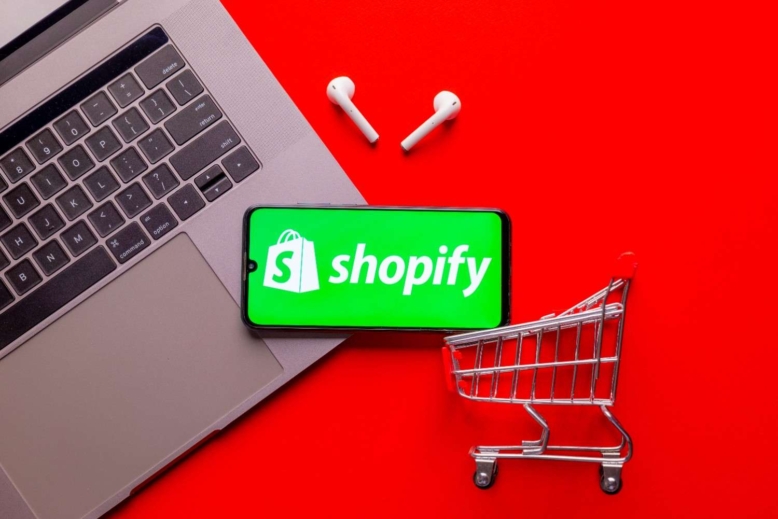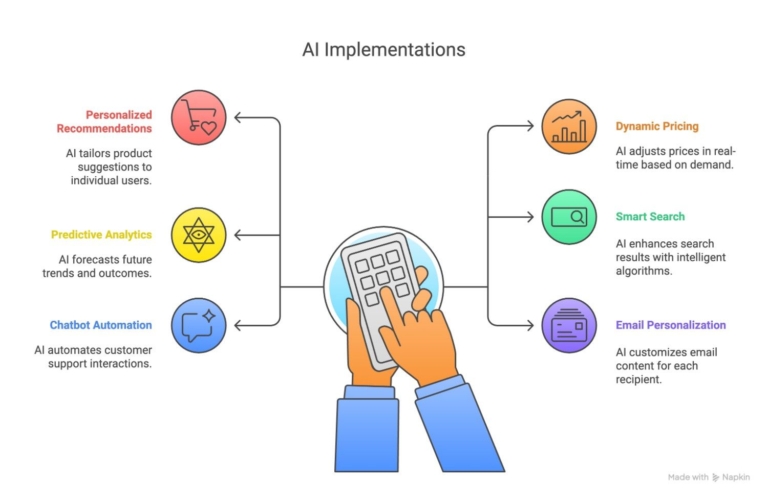Greetings! I'm Aneesh Sreedharan, CEO of 2Hats Logic Solutions. At 2Hats Logic Solutions, we are dedicated to providing technical expertise and resolving your concerns in the world of technology. Our blog page serves as a resource where we share insights and experiences, offering valuable perspectives on your queries.

Is your Shopify store hitting its ceiling? When your monthly revenue crosses $1M+ and your team is juggling manual workarounds for what should be automated processes, you’re leaving serious money on the table.
The signs are everywhere like abandoned carts, slow checkout, lost sales during traffic spikes, and hours wasted on tasks that enterprise competitors automate in seconds. The question isn’t whether you need Shopify Plus. It’s how much revenue you’re losing every day you delay the migration.
Brands that migrate to Shopify Plus see an average 126% increase in conversion rates within the first year. But a botched migration? That’s a six-figure mistake that can set you back 6-12 months.
This checklist ensures your migration becomes a growth accelerator, not a costly detour.
Is Your Brand Ready for Shopify Plus Migration?
Before moving into the technical checklist, let’s be honest about whether Shopify Plus migration is right for you right now.
You’re ready if you’re experiencing:
- Monthly revenue exceeding $500k (ideally $1M+)
- Cart abandonment due to limited checkout customization
- Manual processes eat 10+ hours/week of your team’s time
- Traffic spikes during launches that crash your site
- International expansion plans in the next 12 months
- Need for custom B2B wholesale portals
- Multiple brands under one operational umbrella
Let's talk about a growth roadmap that positions you for a smooth migration when the time is right.
Pre-Migration Phase
1. Audit Your Current Tech Stack
Don’t migrate your problems to a new platform. This is your chance to clean house.
Document everything:
- All installed apps (75% of them probably aren’t needed on Plus)
- Custom code snippets and where they live
- Third-party integrations (ERP, CRM, PIM systems)
- Custom workflows and automations
- Theme customizations
2. Data Inventory & Cleanup
What you’re migrating:
- Product catalog (SKUs, variants, images, descriptions)
- Customer data (purchase history, tags, segments)
- Order history (at least 2 years for analytics continuity)
- Store credit and gift card balances
- URL structure (critical for SEO preservation)
- Blog content and meta data
- Product reviews and ratings
The hidden time bomb: Bad data. One duplicate SKU or broken customer segment can cascade into thousands of errors post-migration.
What successful brands do: Run data quality checks 6-8 weeks before migration. We’ve found that brands with clean data migrate 60% faster with 90% fewer post-launch issues.
3. SEO Preservation Strategy
This is non-negotiable. A bad migration can tank your organic traffic by 40-60% overnight.
Your SEO safety net:
- Complete URL mapping (old URLs → new URLs)
- 301 redirect plan for every single page
- Structured data (Schema) preservation
- XML sitemap preparation
- Page speed baseline (you should improve this, not maintain it)
- Mobile-first indexing check
Migration Phase: The Technical Checklist
4. Choose Your Shopify Plus Migration Method
Three paths:
DIY Migration
- Cost: “Free” (but 200+ hours of your team’s time)
- Risk: High
- Timeline: 3-6 months
- Best for: Very small catalogs (<500 products), simple setups
Automated Tools
- Cost: $500-5k
- Risk: Medium
- Timeline: 4-8 weeks
- Best for: Standard setups with minimal customization
Agency-Managed Migration (Recommended for 95% of brands)
- Cost: $15k-40k
- Risk: Low
- Timeline: 6-12 weeks
- Best for: Anyone serious about growth and can’t afford downtime
Get expert help for Shopify Plus migration
Ready to start your project?
5. Theme Selection & Customization
Shopify Plus brings advanced theme capabilities, but choose wisely.
Decision tree:
- Keep current theme? Only if it’s Plus-compatible and performance-optimized
- Pre-built Plus theme? Good for 6-8 week timelines, moderate customization
- Custom build? Best ROI for unique brand experiences (12-16 weeks)
Performance benchmarks to hit:
- Mobile page speed: <2.5 seconds
- Time to Interactive: <3.5 seconds
- Core Web Vitals: All green
6. Checkout Customization
This is where Shopify Plus earns its keep. A custom checkout can increase conversion by 15-40%.
Essential customizations:
- Branded checkout experience (full design control)
- Custom fields (gift messages, delivery instructions)
- Dynamic shipping options
- Upsells and cross-sells at checkout
- Payment method optimization by region
- Express payment buttons (Shop Pay, Apple Pay, Google Pay)
7. App Migration & Consolidation
The Plus advantage: Many apps become unnecessary.
Replace these with native Plus features:
- Wholesale apps → B2B features
- Discount apps → Scripts and Functions
- Multi-store apps → Multi-store management
- Advanced analytics apps → Shopify Plus analytics
Must-keep integrations:
- Klaviyo or similar (email/SMS)
- Loyalty programs
- Reviews platforms
- Inventory management
- Shipping automation
8. Automation Setup
Shopify Flow is your secret weapon. It’s free with Plus and can automate hundreds of tasks.
High-impact automations:
- Fraud detection and order flagging
- Inventory alerts and reorder triggers
- Customer segmentation (VIP, at-risk, high-value)
- Order routing to specific fulfillment centers
- Refund approval workflows
- Gift card automation
Testing Phase: Catch Problems Before Your Customers Do
9. Staging Environment Testing
This is where 80% of migration disasters are prevented.
What to test:
Functionality testing:
- Add to cart on all devices
- Checkout flow (all payment methods)
- Account creation and login
- Password reset
- Search functionality
- Filtering and sorting
- Promo code application
- Gift card redemption
- Tax calculations (all regions)
- Shipping calculations
Integration testing:
- Email automation triggers
- Analytics tracking (GA4, pixels)
- ERP/inventory sync
- CRM data flow
- Review syncing
- Abandoned cart recovery
Performance testing:
- Load testing (simulate Black Friday traffic)
- Mobile performance on 3G
- International load speeds
- Image optimization
10. User Acceptance Testing (UAT)
Get real people testing your store:
- Customer service team (they’ll catch what developers miss)
- Select VIP customers (beta access)
- Team members who weren’t involved in the build
Run a “soft launch” with 5-10% of traffic for 3-5 days before full migration.
Launch Phase: Go Live Strategically
11. Launch Day Checklist
Timing matters. Never launch on:
- Monday mornings (support team overwhelmed)
- Fridays (can’t address issues over weekend)
- Peak shopping seasons
- During planned marketing campaigns
Best time: Tuesday or Wednesday, early afternoon, during your slowest sales period.
Launch day sequence:
6-8 hours before:
- Final backup of old store
- Data freeze on old store
- Final data sync
- DNS preparation
2 hours before:
- Put old store in maintenance mode
- Final migration of last-minute orders
- SSL certificate verification
Go-live moment:
- DNS cutover
- SSL verification
- Test checkout immediately
- Verify all integrations firing
First 60 minutes:
- Place test orders
- Check analytics tracking
- Monitor site performance
- Test email flows
12. Post-Launch Monitoring
Week 1 critical metrics:
- Conversion rate vs. pre-migration baseline
- Cart abandonment rate
- Average order value
- Site speed (all pages)
- Email delivery rates
- Zero-result searches
- 404 errors
- Support ticket volume
Red flags:
- Conversion drops >10%
- Cart abandonment increases >15%
- Site speed regression
- Spike in support tickets
Most brands see a temporary 5-15% conversion dip in week 1 as customers adjust to the new experience. By week 3, they exceed their old conversion rates.
Post-Migration Optimization: Now the Real Growth Begins
13. Unlock Plus-Exclusive Features
Don’t leave money on the table. Most brands use <30% of Plus features in year one.
Activate these immediately:
Launchpad
- Automate flash sales and product launches
- Schedule price changes
- Theme switching for seasonal campaigns
Wholesale Channel
- B2B portal with custom pricing
- Net payment terms
- Bulk ordering
Scripts & Functions
- Custom discount logic
- Dynamic pricing rules
- Shipping rate customization
Plus analytics
- Customer cohort analysis
- Live view (real-time activity)
- Sales by traffic source
14. AI & Personalization Layer
This is where modern e-commerce separates winners from everyone else.

High-ROI AI implementations:
Personalized product recommendations: 25-40% revenue lift from “you might also like” sections
Dynamic pricing optimization: Real-time price testing based on inventory, demand, and customer segment
Predictive analytics: Forecast demand, optimize inventory, prevent stockouts
Smart search: Natural language understanding, typo tolerance, synonym matching
Chatbot & support automation: Handle 60-70% of common questions instantly
Email personalization: Send time optimization, dynamic content, predictive recommendations
Average ROI of AI implementation: 340% in year one. Cost: $8k-25k for initial setup.
Conclusion
Migrating to Shopify Plus isn’t just a platform upgrade. It’s your foundation for sustainable growth. The brands that scale successfully don’t wait until they’re drowning in limitations. They make strategic moves early.
Brands see an average 126% revenue increase in year one, reduce operational costs , and unlock automation that transforms their business. A rushed or poorly executed migration can cost you six figures and months of recovery time. Follow this Shopify Plus migration checklist to make your journey smooth and if required get expert help.
Let’s make sure your migration is done right.
Schedule a free 30-minute migration assessment where we’ll review your current setup, discuss your growth goals, and map out exactly what a successful migration looks like for your brand.
Ready to Get Started?
Get in touch with our experts and let's discuss your project.

Related Articles







